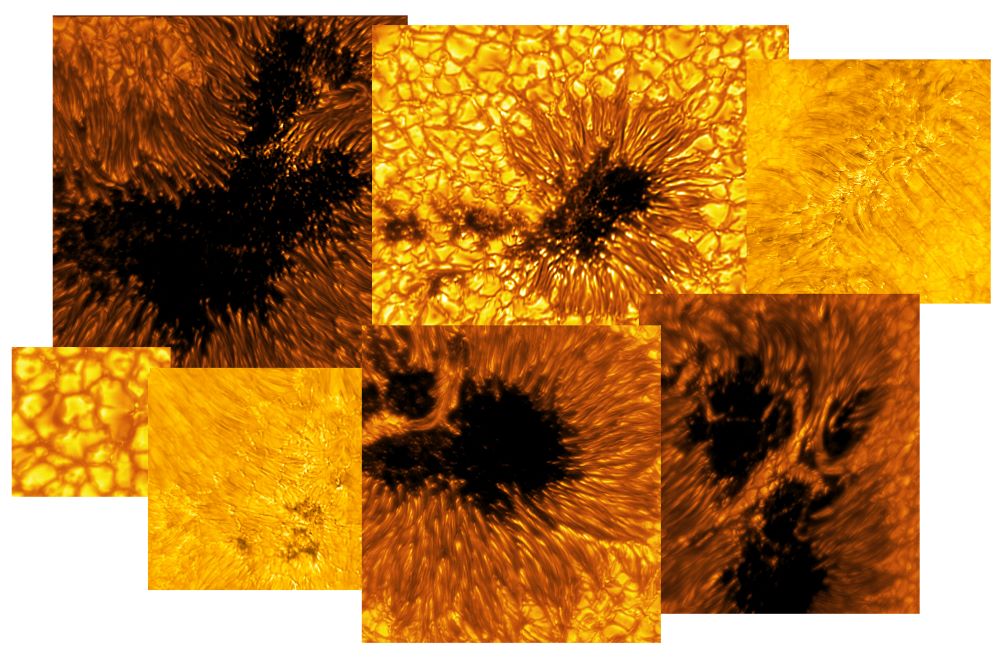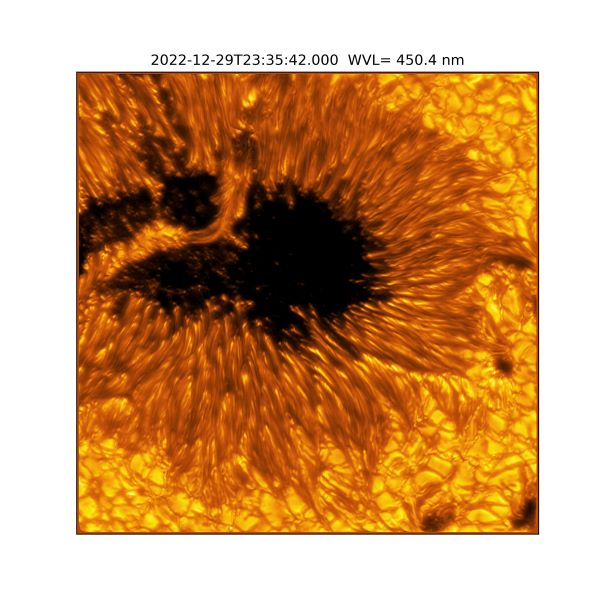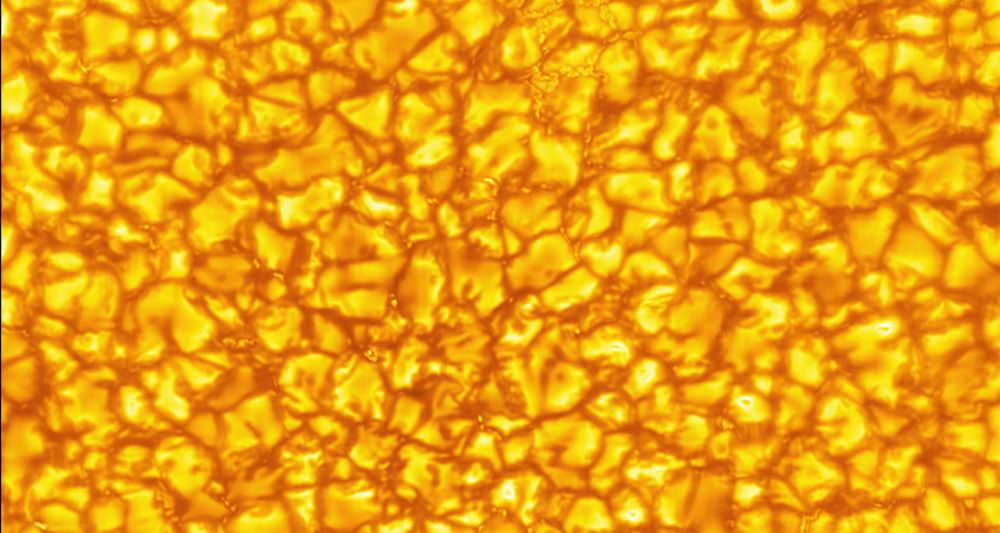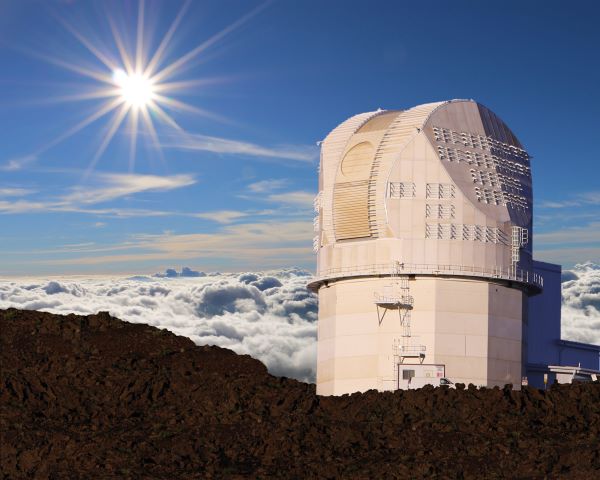Our Sun continues to demonstrate its awesome power in a breathtaking collection of recent images taken by the U.S. National Science Foundation’s (NSF’s) Daniel Inouye Solar Telescope, aka Inouye Solar Telescope, which is the world’s largest and most powerful ground-based solar telescope. These images, taken by one of Inouye’s first-generation instruments, the Visible-Broadband Imager (VBI), show our Sun in incredible, up-close detail.
“These images preview the exciting science underway at the Inouye Solar Telescope,” Dr. Alexandra Tritschler, who is a National Solar Observatory Senior Scientist, tells Universe Today. “These images are a small fraction of the data obtained from the first Cycle. They exemplify the many and much broader science objectives and the much more powerful spectroscopy and spectropolarimetry data that now goes along with the images, none of which was available in 2020 when the Inouye Solar Telescope released its first-light images.”

A collage of new solar images captured by the Inouye Solar Telescope, which is a small amount of solar data obtained during the Inouye’s first year of operations throughout its commissioning phase. Images include sunspots and quiet regions of the Sun, known as convection cells. (Credit: NSF/AURA/NSO)
The solar features in Inouye’s images include sunspots which reside in the Sun’s photosphere. These are the dark spots on the Sun’s “surface” and one of the Sun’s most well-known features, often reaching sizes that equal, or even dwarf, the size of the Earth. It is their dark appearance that can be deceiving, however, as sunspots are responsible for solar flares and coronal mass ejections that produce solar storms, which is a type of space weather.

Image of a sunspot taken by the Inouye Solar Telescope. While they have a dark appearance, sunspots are responsible for solar flares and coronal mass ejections that produce solar storms. Sunspots often reach sizes that equal, or even dwarf, the size of the Earth. (Credit: National Science Foundation (NSF)/Association of Universities for Research in Astronomy, Inc.(AURA)/National Solar Observatory (NSO)

Image of a sunspot with a light bridge, which is hypothesized to be the beginning stages of a degrading sunspot. (Credit: NSF/AURA/NSO)
Other features from the Inouye images include convection cells, which also reside in the Sun’s photosphere, and consist of upward- and downward-flowing plasma, known as granules or “bubbles”. The last feature in the Inouye images are fibrils, which exist in the Sun’s chromosphere and are produced from the magnetic field interactions within the Sun.

Image of solar granules or “bubbles”, intergranular lanes, and magnetic elements in the quiet regions of the Sun. In these features, solar plasma rises in the center of the granule then falls into the intergranular lanes that separates each granule. The faint and transparent features (top center of the image) are magnetic elements that are hypothesized to be the visible signs of the Sun’s magnetic field. (Credit: NSF/AURA/NSO)

Image of solar fibrils, which exist in the Sun’s chromosphere and are produced from the magnetic field interactions within the Sun. (Credit: NSF/AURA/NSO)
The main science goal for Inouye is to examine the Sun’s massive magnetic field in hopes of better understanding its lively behavior responsible for the aforementioned space weather. This weather is responsible for charged particles emanating from the Sun that interact with the Earth’s own magnetic field, which steers the particles to the north and south poles of our planet. These often result in the beautiful auroras observed at those locations, as well as from the International Space Station.
However, space weather can also have drastic consequences on ground stations on Earth, orbiting satellites, and even an astronaut’s health while they’re in space. One of the most notable space weather events is known as the Carrington event, which occurred in 1859 after a massive solar storm caused electric arcs, and even fires, throughout the recently invented telegraph system.
“We live in the outermost atmospheric layer of the Sun, and as such, it is the most influential celestial body in our solar system,” Dr. Tritschler tells Universe Today. “For example, complex sunspots or groups of sunspots can be the source of explosive events like flares and coronal mass ejections that generate solar storms. These energetic and eruptive phenomena influence the outermost atmospheric layer of the Sun, the heliosphere, with the potential to impact Earth and our critical infrastructure (e.g. communication networks, power grids, satellites, astronauts in space, etc.).”
The Inouye Solar Telescope is a 4-meter (13-feet) diameter telescope located at approximately 3,000-meter (10,000-feet) elevation on the island of Maui, Hawai’I. The initial planning for Inouye’s construction began almost 30 years ago with construction breaking ground in 2010, and the first solar images being captured in 2019. Inouye was built and designed to conduct science operations over four solar cycles, each lasting approximately 11 years, meaning Inouye is slated to function into the 2060s.

U.S. National Science Foundation’s Daniel Inouye Solar Telescope. (Credit: NSO/NSF/AURA)
“The Inouye Solar Telescope’s unique ability to capture spectroscopy and spectropolarimetry data in unprecedented detail will help solar scientists better understand the Sun’s magnetic field and drivers behind solar storms,” Dr. Tritschler tells Universe Today. “A lot has happened since the first-light images were released in 2020. The telescope has moved on into its operations commissioning phase and is now regularly observing the sun guided by the scientific community.”
What new discoveries about our Sun will the Inouye Solar Telescope make in the coming years and decades? Only time will tell, and this is why we science!





